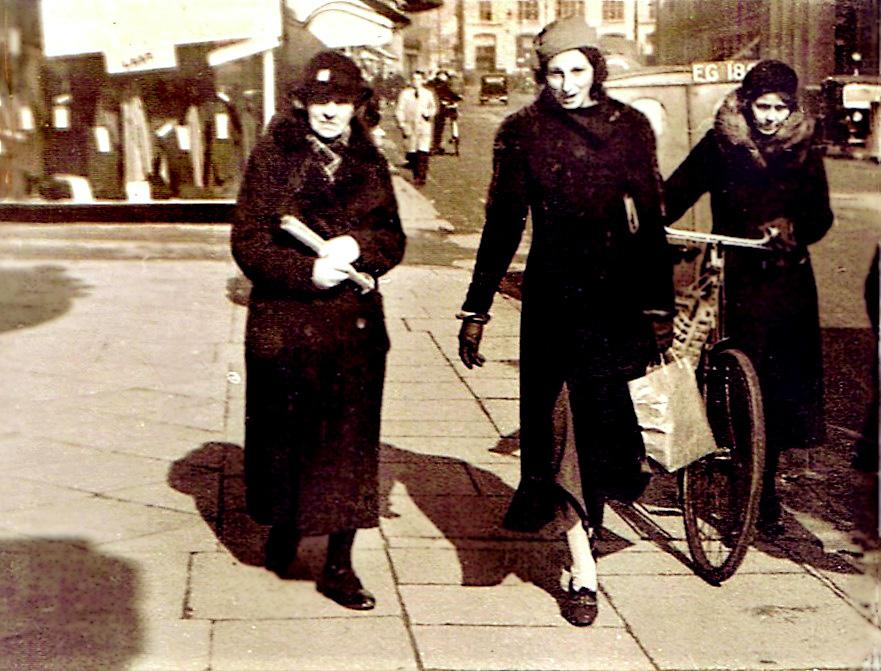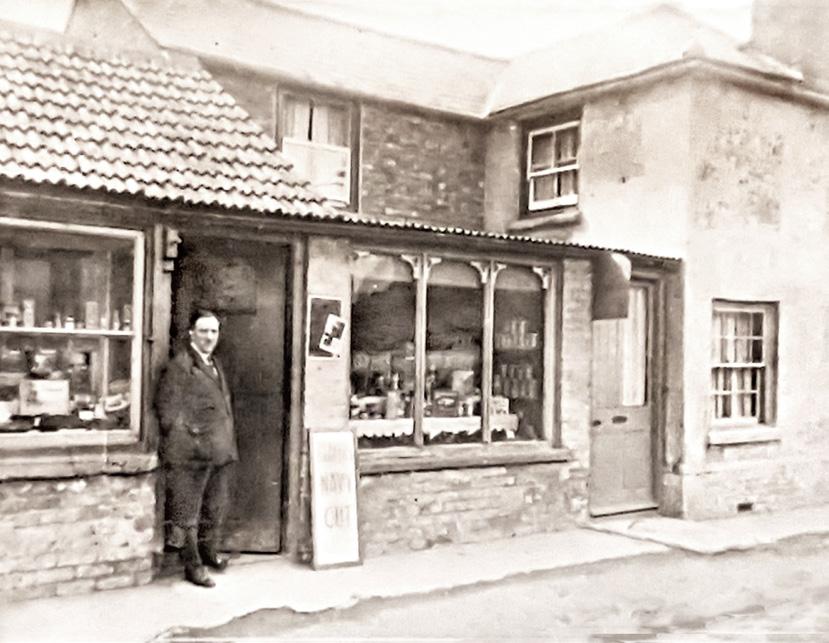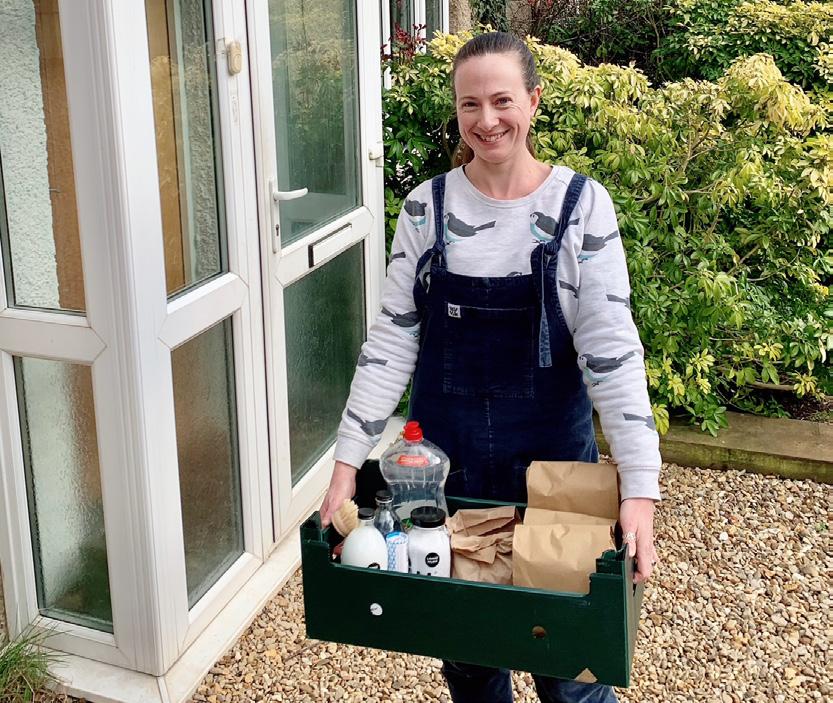
7 minute read
Easter in Eastgate
It was a quintessential English country cottage, at the top of Eastgate with the river flowing by at the bottom of the garden. This was large with trees laden with blossom in spring and fruit in late summer and bushes full of jewel-like berries. Built in 1769, the house was L shaped, the walls were mud and stud with a cement render and when you entered from the pavement you were in the hall with a good-sized parlour on the right. At the back was a smaller-sized comfortable sitting room with a bow window looking out onto the garden. Beyond this was a kitchen and walk-in pantry. There were two sheds, one for coal and wood and the other for general storage. And the outside privy or loo. Upstairs there were three bedrooms.
The house had been built by an old Deeping family, the Chesterfields (who featured in issue 6 of this magazine) who were farmers and craftsmen in a wide spectrum of trades ranging from furniture makers to grocers, to drapers. In 1874 the widow of Francis Chesterfield, Jane Ann, sold her deceased husband’s farm in Frognall and with the proceeds opened a draper’s shop in the family home. Jane had served an apprenticeship to a milliner and dressmaker and had, until her marriage, run a business from her parents’, James and Ann Frisby’s, home in Eastgate where they had a farm of 30 acres. She had married Francis in a ceremony at the Priory Church in 1866 and the couple had two children George (b.1870) and Samuel (b.1873).
Advertisement
The business thrived and Jane employed both of her sons in the shop. Samuel left briefly to undertake Post Office training and returned as a Rural Postman, but eventually he set up his own butcher’s shop in Eastgate. After their mother’s death in 1912, George took over the shop until after the First World War when he had to give up for health reasons. About this time the brothers, now infirm, found themselves in court after young Harold Howes, also of Deeping St James, had stolen three shillings on 31 May 1921 while picking gooseberries for which he had been paid three pence. Harold’s father had birched him but the boy was unrepentant and so his father referred him to the authorities. The Bench told Harold that if he came before the court again he would be sent to an industrial school. His father had to pay 25 shillings court costs, Harold was told to return the money he had stolen and was bound over to be on good behaviour of six months in the sum of £2.
Samuel died in 1925 and his brother George three years later, bringing to an end the Chesterfields’ era at the shop at the top of Eastgate. The enterprise was then taken over by Londoners Charles and Alice Lincoln who lived further down Eastgate in Roma Cottage. Charles’ nickname was Romeo. He had been an auctioneer and retired to the country but as an active man saw an opportunity in Chesterfields’ shop and took it over, building an extension with a red pantile roof and turning the business into a grocery and confectioners. The shop thrived as schoolchildren would spend their pocket money on the way to school, a halfpenny in those days affording a generous selection of sweets. Workmen would call in for tobacco on their way home from work.
Charles and Alice died in the mid 1920s and were succeeded by George and Rebecca Knowles. George was keen to move to Deeping St James to follow
Kate Moulds (centre)
his father Robert who had moved to 63 Church Street when he retired as Senior Foreman at Messrs R Hornby & Son in Grantham in 1921. George had had an illustrious career at the Morris Motor Car company where he started as a clerk but rose up through the ranks to become Mr Morris’s Private Secretary – he spoke French fluently and was an expert shorthand writer. He bought the same business acumen to the shop at the top of Eastgate. Entering the confectionery part of the shop through a solid front door a window display would exhibit all the mouth-watering treats on offer. He expanded the range of groceries and all kinds of sweets and chocolates, carrying all brands of pipe tobacco and cigarettes. An unassuming man, he was happy to sell a pennyworth of sweets to children and to weigh ounces of tobacco known as twist to the workers. He cut the required amount from a coil almost as thick as a thumb, using a little knife so old that its blade was almost worn away.
The grocery part of the shop had a low corrugated roof and was accessed through a wide doorway. This had a much larger display window with shelving edged with white paper showing a selection of desirable goodies. The shop was stocked with a vast array of tinned goods from beans to fruit, and there was also an extensive range of biscuits, a ready supply of fresh fruit and everything needed for domestic cleaning as well. Deeping St James’ answer to Tesco Superstore!
In the autumn, Mr Knowles would hand out his Christmas Club catalogue containing all sorts of treats to tempt his customers: fancy biscuit tins, boxes of chocolates and a good selection of Christmas fare. Each customer was given a payment card and they could pay an amount of their choice to help them out with the big Christmas shop!
But at Eastertime the confectionery side of the business exploded into a vision of loveliness – a cornucopia of chocolate eggs enrobed in brightly coloured silver paper; the average price of which with a small gift inside was one shilling. Cheaper was the forerunner of Cadburys creme egg, which first made its appearance in 1923. Massproduced decorated eggs started to appear during the 1920s but in the 1930s the splendour of the Cadbury range of eggs filled with assortments became something at which to marvel. These magnificent eggs, elegantly packed in decorated cardboard boxes, appealed to the adult section of the market. By the early thirties chocolate eggs were attached to many gift items including watches, jewellery and even cutlery. Cadbury’s had first made an Easter egg in 1875 but they only took off in 1905 when the dairy milk chocolate was manufactured.

By 1934 both of George’s parents had died and he and his wife Rebecca moved into Harrowby Cottage, so named after the street where they had lived in Grantham where George was born. By 1939 George had retired from the shop and enjoyed 13 years of retirement before his death in 1952 aged 72. Rebecca received £1,826 in the Will and lived until 1974 when she died aged 88.
South Luffenham born Kate Moulds had taken over the shop from George and lived on the site with her two children Diana (b.1926) and Maurice (b.1931). Her husband Arthur, a Midland Railway Signalman had died in 1936. Kate married again in 1939, this time to a Railway Fireman Frederick Juniper. Diana married Alfred Amey in Peterborough in 1947 and Maurice moved to Coventry. Following the breakup of her marriage Kate left the area and the house and shop were taken over by Mrs Lily Coley, helped by her daughter Freda who had come from Stowgate. By 1960 the shop had closed and the house was in a dilapidated state. It was demolished and a new bungalow built. Lily died in 1980 but Freda continued to live in the bungalow and could be regularly seen heading up the monthly parade of the Girls Life Brigade who would march from the Cross to the Methodist Church, almost until her death in 2015. Mr Knowles and his shop







Family run company Free, no obligation design service Supply only or supply with installation Siemens and Neff Master Partner

43-45 Bridge Street, Deeping St James Lincolnshire PE6 8HA Tel: 01778 346415 www.devonportskitchensbathrooms.co.uk










